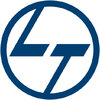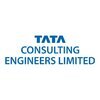Filter interviews by
Rahul Construction Interview Questions, Process, and Tips
Rahul Construction Interview Experiences
3 interviews found
(2 Questions)
- Q1. What is Real Number
- Ans.
Real numbers are numbers that can be found on the number line, including integers, fractions, and irrational numbers.
Real numbers can be positive, negative, or zero.
They include integers like -3, fractions like 1/2, and irrational numbers like √2.
Real numbers can be represented on a number line.
They can be used in mathematical operations like addition, subtraction, multiplication, and division.
- Q2. How many Integer
- Ans.
The question is unclear and incomplete, as it is missing context or details.
Ask for clarification on what is being asked about integers
Request more information on the specific topic or problem related to integers
Provide examples of different types of integers to better understand the question
Interview Preparation Tips
Engineering Student Interview Questions asked at other Companies
I applied via Indeed and was interviewed in Nov 2023. There were 2 interview rounds.
Easy aptitude basic questions are enough for preparation
C++ and Data structured and algorithm
Interview Preparation Tips
I applied via Job Fair and was interviewed in Oct 2022. There were 2 interview rounds.

(3 Questions)
- Q1. Types of paints using site
- Ans.
There are various types of paints used on site, including oil-based, water-based, epoxy, and polyurethane paints.
Oil-based paints are durable and provide a glossy finish, but take longer to dry and emit strong fumes.
Water-based paints are easy to clean up and dry quickly, but may not be as durable as oil-based paints.
Epoxy paints are commonly used for industrial applications and provide a hard, durable finish.
Polyureth...
- Q2. Mixing ratio of paints
- Ans.
Mixing ratio of paints is the proportion of different colors of paint that are mixed together to achieve a desired color.
The mixing ratio of paints varies depending on the type of paint being used.
It is important to follow the manufacturer's instructions for the correct mixing ratio.
For example, a common mixing ratio for latex paint is 8 parts paint to 1 part water.
Another example is a mixing ratio of 2:1 for automotiv...
- Q3. Dft, wft, Relative humidity, dew point temperature, surface temperature, Atmosphere temperature.
Interview Preparation Tips
Painting Supervisor Interview Questions asked at other Companies
Top trending discussions






Interview questions from similar companies

Diploma Electrical Engineer Interview Questions & Answers
Larsen & Toubro Limitedposted on 27 Jan 2025
Diesel Generator: A Reliable Power Source
A diesel generator is a self-contained power generating unit that combines a diesel engine with an electric generator (often an alternator). It's a versatile and widely used source of electricity, particularly in situations where a reliable power supply is crucial.
How Diesel Generators Work
* Diesel Engine: The diesel engine, fueled by diesel fuel, acts as the prime mover. It converts the chemical energy of the fuel into mechanical energy through combustion.
* Electric Generator: The mechanical energy from the engine is transferred to the generator, which converts it into electrical energy. This electrical energy can then be used to power various appliances and equipment.
Applications of Diesel Generators
* Backup Power: Diesel generators are commonly used as backup power sources for homes, businesses, hospitals, and critical infrastructure during power outages.
* Remote Locations: In areas with limited or no access to the grid, diesel generators provide a reliable source of electricity for various applications.
* Construction Sites: Diesel generators power tools and equipment on construction sites, ensuring work can continue even in remote locations.
* Off-Grid Living: Individuals living off the grid often rely on diesel generators for their electricity needs.
* Data Centers: Diesel generators provide backup power to ensure the continuous operation of critical data centers.
Advantages of Diesel Generators
* Reliability: Diesel engines are known for their durability and reliability, making them suitable for demanding applications.
* Fuel Efficiency: Modern diesel engines offer excellent fuel efficiency, reducing operating costs.
* Wide Power Range: Diesel generators are available in a wide range of sizes and power capacities, catering to various needs.
* Easy Maintenance: Diesel generators are relatively easy to maintain and service.
Disadvantages of Diesel Generators
* Noise: Diesel generators can be noisy, which may be a concern in certain settings.
(3 Questions)
- Q1. Transformer & protection
- Q2. Breaker & protection
- Q3. Motor panel Feeder & protection
(2 Questions)
- Q1. Motor & Motor protection
- Q2. All types panel & protection
- Ans.
Panel and protection systems are essential components in electrical engineering for controlling and safeguarding electrical circuits.
Different types of panels include distribution panels, control panels, and instrumentation panels.
Protection systems include overcurrent protection, earth fault protection, and differential protection.
Panels are used to house electrical components and provide a safe environment for operat...

Assistant Manager Operations Interview Questions & Answers
L&T Constructionposted on 2 Mar 2025
I was interviewed in Sep 2024.
(2 Questions)
- Q1. What is the density of pu
- Q2. Tell me the method statment
What about the share market
(2 Questions)
- Q1. What do you decide in basment waterproofing
- Q2. What do you decide on terrace water proofing
Interview Preparation Tips

(2 Questions)
- Q1. ETL Process/ python technical and pyspark technical interview question.
- Q2. Difference between broadcast variable and and global variable in pyspark
(1 Question)
- Q1. Salary negotiation
Interview Preparation Tips

IT Engineer Interview Questions & Answers
Kalpataru Projects Internationalposted on 3 Mar 2025
(2 Questions)
- Q1. What actions would you take to support a proceeding meeting if the Internet speed becomes slow during a critical time?
- Q2. What is two-factor authentication?
Interview Preparation Tips

Scaffolding Supervisor and Inspector Interview Questions & Answers
Tata Projectsposted on 24 Jan 2025
(5 Questions)
- Q1. What are the standards for scaffolding codes?
- Q2. What are the different types of scaffolding erection?
- Q3. What type of use material for safety purchase
- Q4. How to safe Erection
- Q5. Identify risk and hazard
Interview Preparation Tips

Senior Autocad Draughtsman Interview Questions & Answers
G R Infraprojectsposted on 15 Feb 2025
(2 Questions)
- Q1. AutoCAD question
- Q2. Autocad related questions
(2 Questions)
- Q1. AutoCAD related questions
- Q2. AutoCAD related questions
(1 Question)
- Q1. AutoCAD related questions

Store Keeper Interview Questions & Answers
Megha Engineering & Infrastructuresposted on 21 Dec 2024
(5 Questions)
- Q1. My Experience is good and best Experience this this my problem is company dropuot , My interview this HR.and CEO. BM .and Accounted this all company best Experience members this me interview show That is ...
- Q2. Company manufacturing work this BHEL part and CGL part working this manufacturing company
- Q3. What is skill? Ans:- MS word ms excel and telly knowledge all store keepers knowledge
- Q4. What this professional and personal? Ans:-I am work times professional and that is work out time personal
- Q5. What did you house? Working side areas areng
Rahul Construction Interview FAQs
Tell us how to improve this page.
Interview Questions for Popular Designations
- Senior Executive Interview Questions
- Software Engineer Interview Questions
- Intern Interview Questions
- Senior Associate Interview Questions
- Sales Executive Interview Questions
- Graduate Engineer Trainee (Get) Interview Questions
- Test Engineer Interview Questions
- Senior Software Engineer Interview Questions
- Show more
Rahul Construction Interview Process
based on 2 interviews
Interview experience
Interview Questions from Similar Companies
Rahul Construction Reviews and Ratings
based on 31 reviews
Rating in categories
|
Site Engineer
9
salaries
| ₹1.8 L/yr - ₹3 L/yr |
|
Civil Site Engineer
8
salaries
| ₹1.5 L/yr - ₹4.8 L/yr |
|
Accountant
7
salaries
| ₹1.6 L/yr - ₹3.6 L/yr |
|
Junior Engineer Civil
6
salaries
| ₹2 L/yr - ₹3.1 L/yr |
|
Senior Engineer
5
salaries
| ₹4.2 L/yr - ₹5.5 L/yr |

Larsen & Toubro Limited

Worley

AECOM

Tata Technologies
- Home >
- Interviews >
- Rahul Construction Interview Questions












